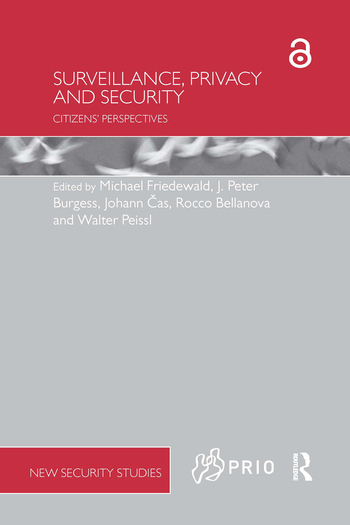Workplace Violence: How to Identify and Mitigate It in Your Enterprise

The Capitol Gazette in Annapolis, MD, the Inland Regional Center in San Bernardino, CA, and just recently, a disgruntled worker in Virginia Beach, VA who took his personal grievances out on his workers at a government office, killing 12 people. All recent examples of workplace violence that are becoming all too frequent.
According to a recent study by the Society for Human Resource Management (SHRM), approximately 1 out of 7 Americans do not feel safe at work. Nearly a quarter of employees polled said they had experienced an incident of workplace violence, with 14 percent of employees reporting incidents last year.
Even more, nearly one-third of American employees are unsure or don’t know what to do if they witness or are involved in a workplace violence incident.
And while the majority of HR professionals say their organization already provides workplace violence training to employees on how to respond to a workplace violence act, more than one-third do not provide such training to employees. Additionally, while almost all say their company has a process for identifying employees with a history of violence, more than half are unsure whether they have a workplace violence prevention program.
According to the research, Americans understandably feel safer when employers provide prevention and training response programs. Additionally, more employees know how to react if their organization already has a workplace violence prevention and/or employee response training program.
The Occupational Safety and Health Administration (OSHA) estimates that more than two million American workers are affected by workplace violence each year. Additionally, the Bureau of Labor Statistics estimated that more than 18,000 people suffered nonfatal injuries and more than 800 died as a result of workplace violence in 2017.
OSHA defines workplace violence as "any act or threat of physical violence, harassment, intimidation, or other threatening disruptive behavior that occurs at the work site.” It can range from verbal threats to physical altercations or even homicide between employees, clients, customers or visitors.
How can workplace violence be identified and prevented? According to the US Department of Labor, indicators of workplace violence may include:
- attendance problems
- decreased productivity
- inconsistent work patterns
- marked changes in personal grooming habits;
- inappropriate comments, threats, throwing objects
- evidence of possible drug or alcohol use/abuse
- evidence of serious stress in the employee's personal life
The goal for enterprise security is to make your workplace a difficult target for violence, and if it does happen, be prepared to react quickly. If you make the investment in security and preparation, your employees will feel safer and respect you for valuing their safety and security.
This is where security technology, specifically, solutions that keep potential dangerous individuals out of your enterprise, can play a major role.
For example, watchlists of known perpetrators that are incorporated into a visitor management system are an effective tool to ensure that only authorized people enter your facility. With a quick swipe of an ID, visitors can be screened, checked in and badged or even turned away.
Integrations between perimeter protection detection systems (e.g., facial-recognition camera systems) with cloud-based visitor management systems, can sent alert your administrators, security personnel, Point of Entry (POE) Staff and even the local police to an unwanted visitor before they get to any of your entry points. It is not always possible to maintain a presence of security personnel at your front entrances. Here, self-service visitor management systems (i.e., kiosks) make it easy for contractors and other visitors to your facility to register themselves at an interactive kiosk and gain entry.
Individuals can often use a Driver’s License can be scanned at the visitor kiosk, or information can be entered manually into a system. Once your visitor has entered their information into a self-service kiosk, a system administrator, a security guard, or other personnel is alerted and can authorize or deny access based on any watchlist or sex offender entries. If a visitor who is denied access becomes a further threat, personnel can initiate any additional internal or external alarms, which may include alerting security personnel or initiating a hard lockdown.
Background screenings of visitors can quickly screen a visitor and decide if he or she should be welcomed or turned away. Premium solutions allow you to nearly instantly screen incoming visitors against the National Sex Offender Database, your own custom Watch List of unwelcome visitors, and your own custom VIP List. Many solutions allow you to quickly (and silently) communicate with your security team in the event of an emergency so you can initiate your emergency protocol.
If workplace violence does begin to unfold, you need to act quickly and appropriately. There are solutions available that allow your security team to lock down areas, even your entire facility, and alert first responders. When seconds count, emergency notifications can be sent to alert security to begin security protocol procedures, even before any hard-wired sirens or physical alerts are initiated. When a lockdown is called for, there are solutions that can send an audible siren to all users’ devices (computers and mobile devices) so even if they have headphones on or other applications running on their computers or mobile devices, they are able to hear the lockdown siren, look for their notifications, and take immediate action.
While more information on the causes of workplace violence and how to handle it is becoming known, violent situations do happen and unfortunately are happening more often. No enterprise is immune from workplace violence and no employer can totally prevent it. However, knowing some of the warning signs, employing security technology solutions, and providing security plans and training on security protocols can help to mitigate the risk of an event from taking place in your enterprise.
Looking for a reprint of this article?
From high-res PDFs to custom plaques, order your copy today!









